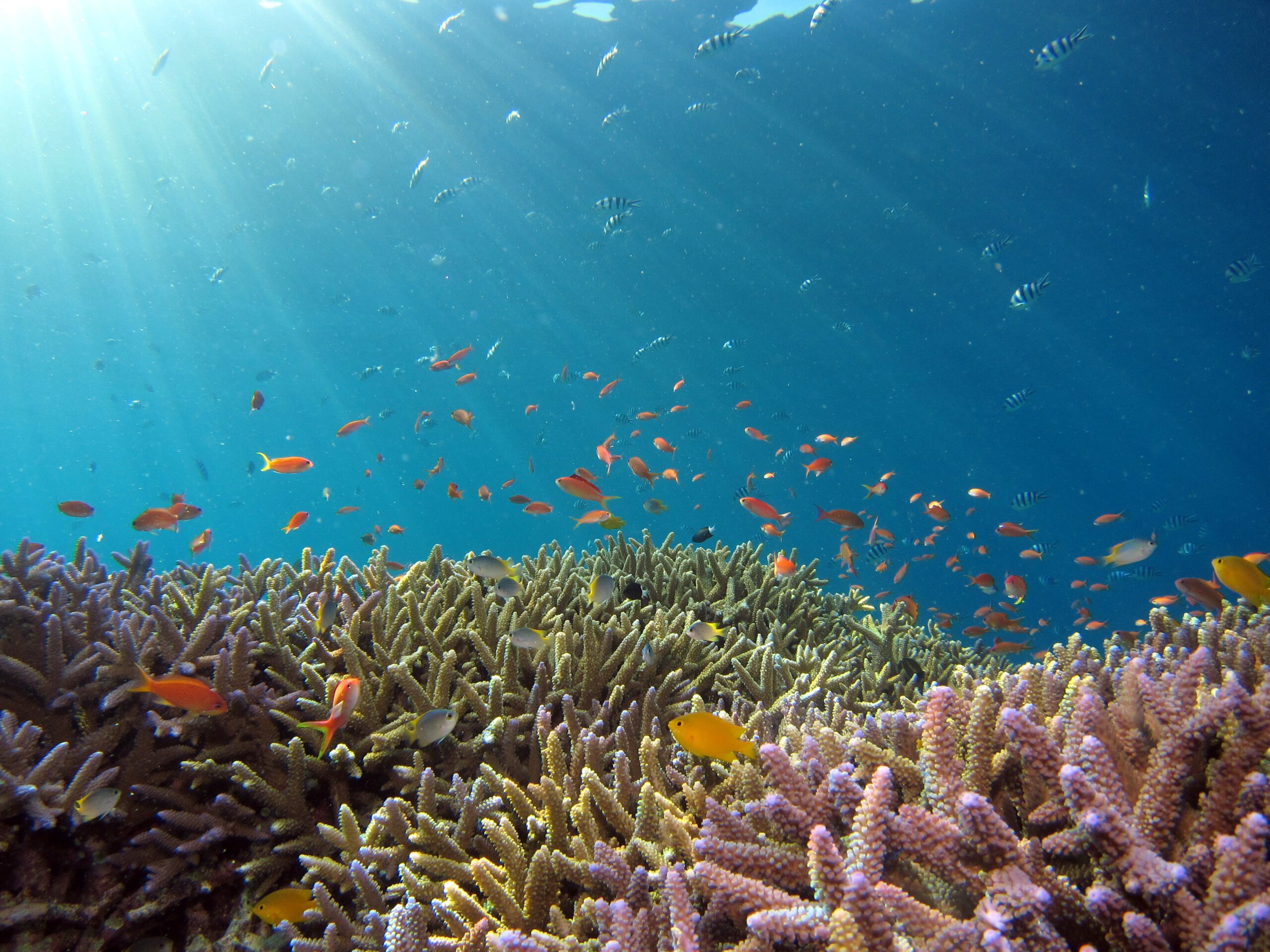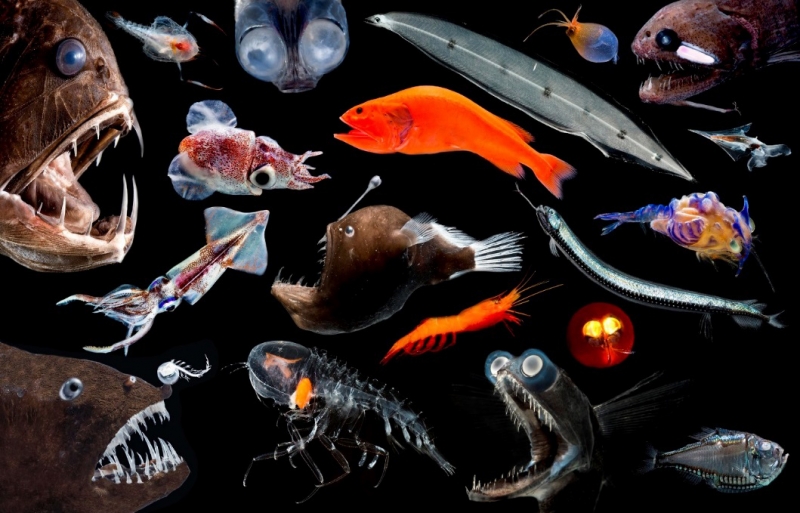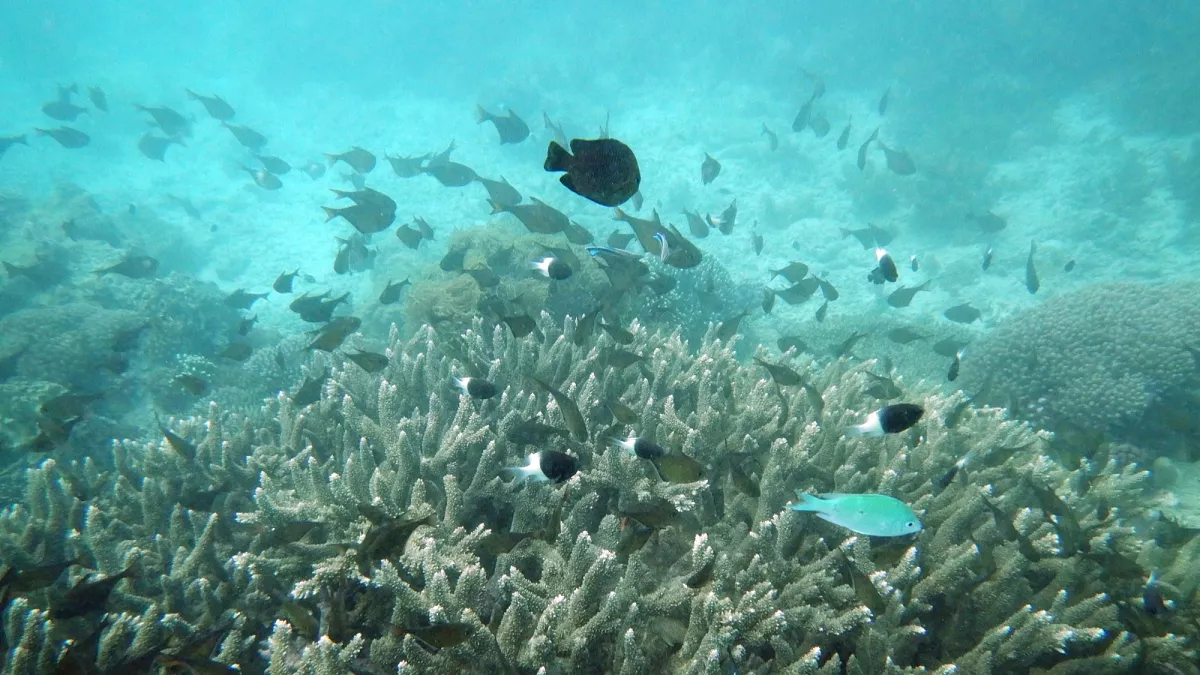solsticeuniversity.com – The ocean ecosystem, covering more than 70% of Earth’s surface, is one of the most complex and vital systems on the planet. It plays a crucial role in maintaining global biodiversity, regulating the climate, and supporting human life. From the tiniest plankton to the largest whales, the ocean is a dynamic network of interconnected species and habitats.
What Is an Ocean Ecosystem?
An ocean ecosystem consists of all the living organisms and physical components (like water, sunlight, and minerals) interacting within the marine environment. These ecosystems are incredibly diverse, ranging from shallow coral reefs and mangroves to the deep sea.
The ocean is divided into various zones, each hosting unique life forms and characteristics:
- Epipelagic Zone (Sunlight Zone): The surface layer where sunlight penetrates, allowing photosynthesis.
- Mesopelagic Zone (Twilight Zone): Limited light; home to bioluminescent organisms.
- Bathypelagic Zone (Midnight Zone): No sunlight; species rely on detritus or hydrothermal vents for energy.
- Abyssopelagic and Hadal Zones: The deepest parts of the ocean, hosting extreme pressure-adapted organisms.
Key Components of the Ocean Ecosystem
1. Producers
- Phytoplankton: Microscopic plants that produce oxygen and form the base of the marine food web.
- Seaweed and Algae: Larger producers that support diverse habitats, like kelp forests.
2. Consumers
- Zooplankton: Tiny animals that feed on phytoplankton.
- Fish and Marine Mammals: From sardines to dolphins, they form essential links in the food chain.
- Predators: Sharks, orcas, and other apex predators maintain balance by controlling prey populations.
3. Decomposers
Bacteria and fungi break down dead organic matter, recycling nutrients back into the ecosystem.
4. Abiotic Factors
- Salinity, temperature, currents, and nutrients influence the distribution and behavior of marine life.
Importance of the Ocean Ecosystem
1. Climate Regulation
- Oceans absorb about 25% of the CO₂ emitted by human activities, helping mitigate climate change.
- They regulate weather patterns and act as a heat sink, stabilizing global temperatures.
2. Oxygen Production
Marine plants, especially phytoplankton, produce more than 50% of the Earth’s oxygen, making oceans essential for life on land.
3. Biodiversity Hotspots
- Coral reefs, often called the “rainforests of the sea,” support thousands of species despite covering less than 1% of the ocean floor.
- Mangroves and estuaries serve as nurseries for many marine organisms.
4. Economic and Social Value
- Oceans provide resources such as fish, oil, and minerals.
- They support industries like tourism, transportation, and renewable energy (e.g., offshore wind farms).
Threats to Ocean Ecosystems
Despite their resilience, ocean ecosystems face numerous threats:
1. Climate Change
- Rising sea temperatures lead to coral bleaching and disrupt marine life patterns.
- Melting polar ice caps contribute to sea-level rise, affecting coastal ecosystems.
2. Pollution
- Plastic waste harms marine animals through ingestion and entanglement.
- Chemical runoff from agriculture causes dead zones, where oxygen levels are too low to support life.
3. Overfishing
Unsustainable fishing practices deplete fish stocks, disrupt food webs, and threaten species with extinction.
4. Habitat Destruction
- Coastal development and dredging damage critical habitats like mangroves and coral reefs.
- Bottom trawling destroys seafloor ecosystems.
5. Ocean Acidification
Absorption of excess CO₂ reduces the pH of seawater, weakening calcium-based organisms like corals and shellfish.
Conservation Efforts
Preserving ocean ecosystems is crucial for the health of the planet. Key strategies include:
1. Marine Protected Areas (MPAs)
Establishing MPAs helps conserve biodiversity and allows ecosystems to recover from human impacts.
2. Sustainable Practices
- Promoting sustainable fishing to prevent overexploitation.
- Reducing single-use plastics to combat ocean pollution.
3. Restoration Projects
- Coral restoration initiatives involve planting lab-grown corals in damaged reefs.
- Mangrove reforestation protects coastlines and supports marine life.
4. Global Agreements
Treaties like the Paris Agreement and the UN Convention on Biological Diversity address climate change and ocean conservation.
5. Awareness and Education
Educating communities about the importance of oceans fosters stewardship and reduces harmful practices.
Conclusion
The ocean ecosystem is a cornerstone of life on Earth, influencing everything from the air we breathe to the climate we live in. However, human activities have placed immense pressure on this vital system. Protecting and restoring ocean ecosystems is not just an environmental imperative—it is essential for the survival and prosperity of future generations. By working together, we can ensure that our oceans remain a source of wonder, sustenance, and balance for the planet.




